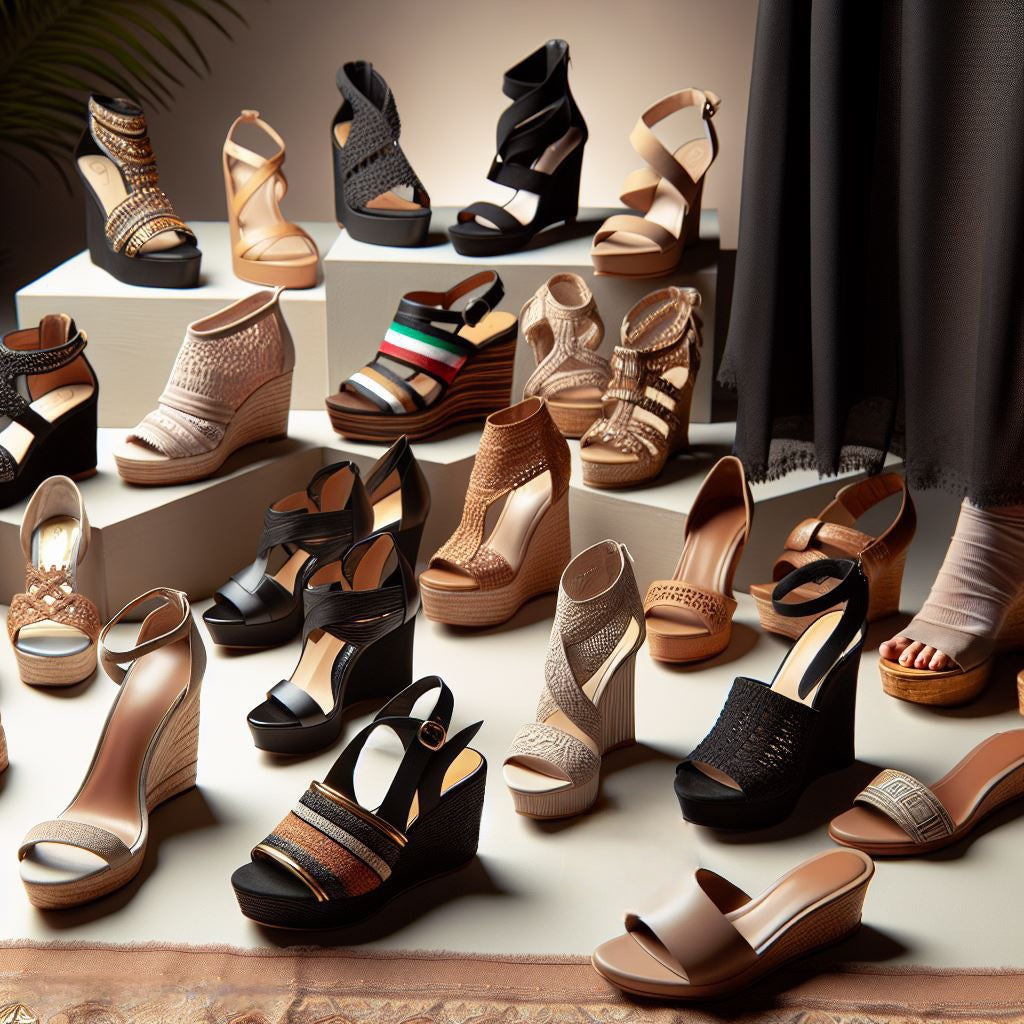
The Role of Footwear in Emirati Fashion: Then and Now
Partager
Fashion in the Emirates has always been a reflection of its rich cultural heritage, deep-rooted traditions, and modern aspirations. From the practicality of traditional footwear to the luxurious designs seen today, the evolution of Emirati footwear tells a story of style, identity, and transformation. Let’s explore how footwear has evolved in Emirati fashion and its significance, past and present.
Footwear in Traditional Emirati Culture
In the past, footwear in the Emirates was designed with practicality and the region’s climate in mind. Traditional shoes, such as naqabat and zaboun, were crafted using natural materials like leather and palm fibers. These lightweight and breathable designs provided comfort and protection against the harsh desert environment. Simplicity and functionality were paramount, as footwear needed to withstand the heat and rugged terrains.
For men, sandals played a crucial role, often crafted by local artisans who tailored each pair for durability and ease of movement. Women, on the other hand, adorned their feet with simple yet elegant sandals or slippers, occasionally embellished with modest embroidery or beads, reflecting their personal style and the occasion.
Symbolism and Cultural Significance
Footwear in traditional Emirati culture was more than a functional item; it carried cultural significance. It was a mark of modesty and respect, with people often removing their shoes before entering homes or places of worship. The designs also reflected the wearer’s social status and lifestyle, with wealthier individuals often able to afford more intricate and durable pairs.
The Modern Era: A Fusion of Tradition and Luxury
Today, footwear in the UAE has undergone a dramatic transformation. The modern Emirati wardrobe embraces global fashion trends while honoring traditional aesthetics. Luxury brands, local designers, and artisanal craftsmen all play a role in shaping the footwear landscape.
For men, traditional sandals, known as madas sharqi, have evolved into high-end leather designs, often incorporating intricate stitching or subtle embellishments. These sandals remain a staple in Emirati men’s attire, seamlessly blending with the kandura for a polished look.
For women, footwear has become an essential part of self-expression. Emirati women often opt for bold, glamorous shoes to complement their abayas and kaftans. From designer heels adorned with crystals to bespoke sandals with artistic details, modern footwear reflects the wearer’s personality and status. Comfort also remains a priority, with wedges and elegant flats gaining popularity for their practicality and style.
Footwear and Emirati Identity
The evolution of footwear in Emirati fashion underscores the nation’s journey from tradition to modernity. It’s a reflection of how the UAE has embraced progress while preserving its cultural roots. Footwear remains a bridge between the old and the new, a testament to the Emirati ability to honor heritage while looking to the future.
Today, Emiratis celebrate their individuality through fashion choices, and footwear plays a pivotal role in completing their look. Whether it’s a pair of traditional sandals or designer heels, every choice speaks to the wearer’s unique style and the rich tapestry of Emirati culture.
Step Into Tradition and Style with Footsie 101
At Footsie 101, we celebrate the intersection of tradition and modernity. Our curated collection of footwear reflects the timeless elegance of Emirati fashion while embracing contemporary trends. Whether you’re looking for traditional-inspired sandals or bold, statement-making heels, our range offers something for every occasion.
Explore the journey of Emirati fashion through footwear and step confidently into the future, rooted in tradition but walking in style. After all, your style is your identity, and let your journey in footwear reflect elegance and individuality with Footsie 101.
